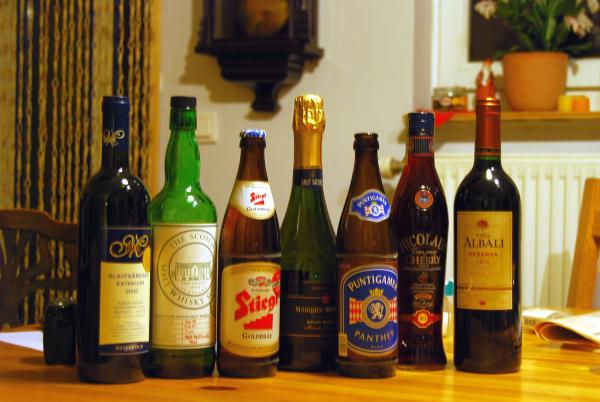The latest 2020-2025 US Dietary Guidelines, which are updated every five years, landed over the holidays with the usual flurry of claims that vested interests have meddled with them.
First out of the blocks was the Physicians Committee for Responsible Medicine (PCRM), which doesn’t seem to see the irony of being a pro-vegan lobby group accusing the independent Dietary Guidelines Advisory Committee (DGAC) of being a hotbed of food industry shills.
The PCRM’s protestations that meat and dairy have been given too much prominence in the new eating guidelines were wholly predictable, apart from the accusation of racial bias, which was an unexpected twist.
But the bigger furor on the release of the guidelines related to what they had to say on sugar and alcohol.
The sugar/alcohol outcry was over two recommendations made by the DGAC, who advise the federal government on developing the guidelines, that were not included in the final report.
The first was a proposal that the 2020-25 guidelines should advise Americans to consume a maximum of 6 percent of calories (energy) from added sugars, down from no more than 10 percent in the 2015-20 guidelines. The second was that men's daily recommended alcohol intake be reduced from two drinks per day to one.
The decision by the USDA and Health and Human Services (HHS) not to include these proposed changes when they wrote the guidelines prompted several criticisms, including from the Center for Science in the Public Interest (CSPI), which expressed disappointment that greater cutbacks in added sugars were not recommended, and the American Institute for Cancer Research who accused the USDA and HHS of bowing to “industry pressure” by not reducing the two-drink-a-day limit for men.
But I’d counter that the USDA and HHS actually made sound decisions and that the latest guidelines have been pitched about right.
Why so?
Sugar Guidelines
Well, for sugar at least, telling people to slash their intake to only 6 percent of calories is a hard and largely unrealistic task that provides few extra benefits over the more modest 10 percent recommendation.
Added sugar intake in the US currently runs at around 13 percent of calorie intake on average. While reducing to 10 percent can be achieved with fairly minimal dietary upheaval, roughly halving current intake to the 6 percent figure would mean potentially unpalatable and unsustainable changes to diet, plus the risk of the public completely disengaging from the advice.
Brandon Lipps, USDA deputy undersecretary for food, nutrition and consumer services told the Wall Street Journal that the new evidence for sugar is “not substantial enough to support changes to quantitative recommendations.” I agree.
While there is a pretty much a global consensus that adults and children should reduce their daily intake of “free” sugars — those added to foods and drinks or present naturally in honey, syrups, and fruit juices — to no more than10 percent of total energy intake, there’s far less evidence to support a cut to 5 or 6 percent.
Indeed World health Organization guidelines released in 2015 rated sugars intake at 10 percent of total energy as “a strong recommendation” but intake at 5 percent as only a “conditional recommendation.” They noted that implementation of the 5 percent figure as policy would require proper examination of the trade-offs, along with stakeholder dialogue and consultations.
Given the extra benefit of dropping sugar intake to 5 or 6 percent is also largely only an effect on tooth decay, and since the US has a largely fluoridated water supply, the issue becomes even less relevant. So, the decision to go with the 10 percent figure gets my vote for being the pragmatic one.
Alcohol Guidelines
What about alcohol? The new guidelines stick with the advice that men are okay having two drinks a day rather than reducing to one (the recommendation for women), and I don’t think this is too far off the mark either.
Ultimately, two drinks a day is still low risk for most of the male population, and like it or not (I don’t), women’s bodies do reach higher blood alcohol concentrations for a given alcohol intake than men.
The bigger picture, though, is that arguing over the academic fine points of a dietary policy is like fiddling while Rome burns, as the main problem is not the guidelines themselves but that we don’t even get close to following them.
The food industry must play its part here as it's hard to follow healthy eating guidelines when the products available in the grocery store don’t make it easy to do so. In the UK, where the food industry has been called to account by the government, there have been positive changes in the composition of many foods, largely within a voluntary framework, so it doesn’t always need a heavy-handed regulatory approach.
Realism, Not Idealism
Currently, the Healthy Eating Index score for the average American is 59 on a 0-100 scale, where 0 is not following healthy eating guidelines at all and 100 is following all of them to the letter.
That figure could go higher and rates of diet-related disease improve with the right combination of personal responsibility and industry effort. But it also takes a realistic rather than idealistic set of dietary guidelines to model our eating on.




